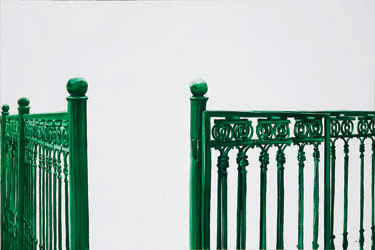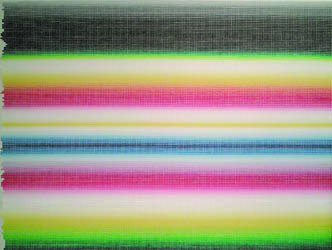SICHUAN: THE PLACE BEHIND THE LOVE
| October 2, 2010 | Post In LEAP 5
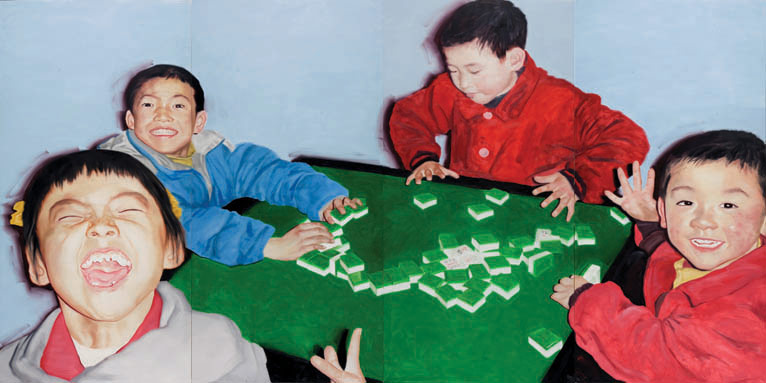
Inside the Chinese art world, people tend to think of the Sichuan artists (which we should define as those coming from the southwestern area of China centered on Chongqing and Chengdu) as belonging to a tight, perfectly ordered community. This impression might initially come from their easily recognizable accents and common love of hot pot—a shared sensorium based on a rich, shared regional culture—or from their common bonds to a single institution, the Sichuan Institute of Fine Arts, where the painting for which the “Sichuan Army” is primarily known is taught. In a market still mainly driven by painting, the “Sichuan Army” is seen as a pillar holding up half the Chinese art world’s sky. Zhang Xiaogang, Luo Zhongli, Zhou Chunya, Ye Yongqing, He Duoling, Yang Qian, and several others were members of the Institute’s entering classes of 1977 and 1978. The tradition they began was then inherited by artists like Feng Zhengjie, Chen Wenbo, He Sen, Zhao Nengzhi, Zhang Xiaotao, Zhong Biao, Guo Wei, and Yang Mian, and later on again by the young group known as the “Cartoon Generation.” Sichuan is a phenomenon: every few years, it seems, a new group of Sichuan painters bursts onto the scene.
As this local system began to emerge, a distinctive external impression of the “Sichuan artists” also took shape; to artists from other regions, the Sichuan army seems like a unitary bunch. And with reason—whenever an outside curator (or critic, gallerist, collector, journalist) goes to visit a Sichuan artist’s studio, that artist will unfailingly ask the guest whether they have been to see the other Sichuan artists nearby. And regardless of whether that guest is himself an art-world player, or just introduced by another colleague or friend, the more “important” of the Sichuan artists will take turns receiving the guest, inviting other friends over to meet them, creating a warm and friendly atmosphere. This is a tacitly understood tradition, that one artist will assume the position of “landlord,” knowing exactly whom the visitor should also be taken to meet. This surface-level warmth, in the eyes of one well-known Sichuan poet, is exactly what you find in the back-and-forth of a Chengdu teahouse. Deep disagreements may still exist, and privately these artists may have drifted, but they will still sit at the same table, if only to avoid making their mutual friends feel awkward. Still, this disposition has been interpreted by many outsiders as evidence of the Sichuan artists’ cooperative spirit. What’s interesting is that the conflicts often exist between those who were closest in the past, so their fallings-out become more open, more permanent. And this unspoken dynamic works in turn as a force binding the system together: as the circle threatens to disintegrate from within, they realize the risks of sticking so exclusively to their narrow territory at the expense of expanding outward. Thus the Sichuan artists, as they leave their home province, seek to expand its influence and position nationally. And in a Chinese art world still centered on Beijing, the capital is the chosen destination for most.
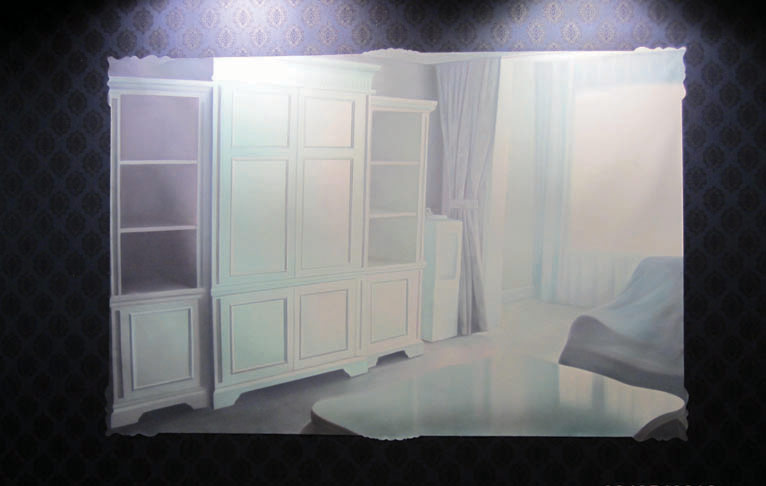
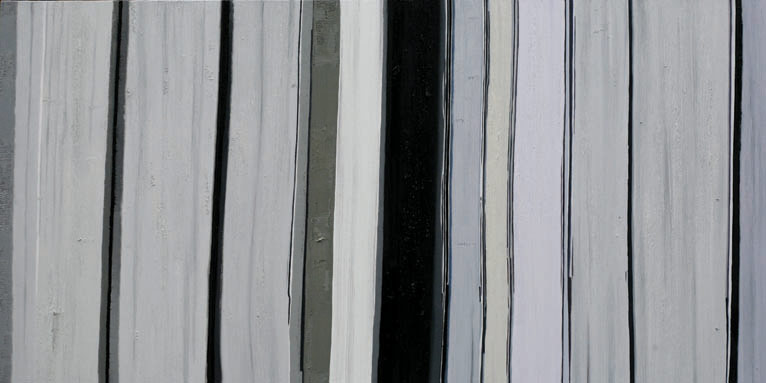
Chen Wenbo was among the earlier of the Sichuan to arrive in Beijing. A member of the Sichuan Institute art education department’s entering class of 1986, he was fortunate to count Zhang Xiaogang and Ye Yongqing among his teachers. Says Chen, “It was an idealistic era, there was no art market, and art was not seen as a way to make money—it was a much less desirable route to riches than opening a company or going into the interior design business. The teachers and students who chose art were motivated entirely their own enthusiasm. And the teachers in the education printmaking departments were most interested in modern art, quite unlike the “native soil realism” that was the school’s trademark. The age gap between students and teachers in our department was only eight or ten years. We were all moved by the same social realities, and we all found ourselves in similar economic circumstances, so it was easy for us to be our teachers’ friends as well as pupils. These teachers were already well known at the time, and they would often travel abroad, bringing back lots of slides and catalogues. We would look at these artifacts together and discuss them. As students, we felt that having such good instructors so invested in us mean we had to live up to their expectations, and so a small circle slowly formed around Zhang Xiaogang and Ye Yongqing.” In Chen’s memories there surfaces a collective spirit of being in this together; when they faced external disdain for their heterodox methods, these artists could always relay on the safety and support of each other. Even now, Chen does not deny the guidance and help Zhang and Ye gave him in his early years, saying, “Every circle has a leader, who holds that position because of the things he has done for everyone else, and out of the trust and prestige that comes with having done them.”
After the art market appeared, things changed, faster and more fiercely than anyone could have imagined. Chen Wenbo moved from Chongqing to Beijing in 1999, and says jokingly that for a while, his apartment in Huajiadi West was unofficially known as the Sichuan artists’ “representative office” in Beijing. Asked why he came to Beijing, he responds that he was looking for a richer perspective. Seen today, the community of studios that emerged in a single building in Huajiadi West between 2000 and 2002 resembles a bridge between eras, continuing the bohemian tradition of Yuanmingyuan and the East Village even as it laid the framework for the current studio clusters that function to unlock “economies of scale” in the current art market. Huajiadi West is an old-style residential compound located just beside the Central Academy of Fine Arts; at that time the going rent for a two-room flat was RMB 1500. Artists would use one room for painting, the other for living. Chen says that he chose the location for its proximity to CAFA and the art-supply stores that surrounded it. It wasn’t far from the city center, offering easy access. And thus, following the arrival of Zhang Xiaogang, Chen Wenbo, Qiu Zhijie, and Ma Liuming, more and more artists moved in, including Sichuan painters Yang Qian, Feng Zhengjie, Feng Zhengquan, He Sen, and Zhang Xiaotao.
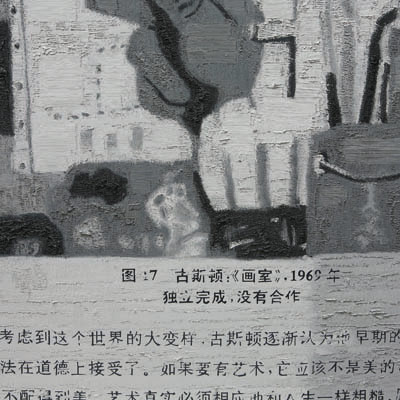
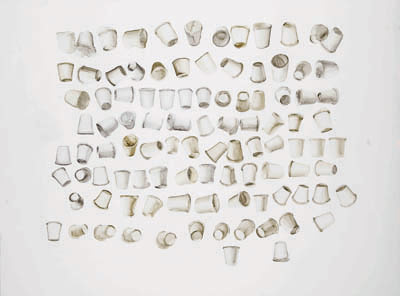
For Feng Zhengquan, also a graduate of the Sichuan Institute, the experience of living in Huajiadi was enough to convince him that he could be a professional artist. Feng graduated from the education department at the Sichuan Institute in 1999, then moved to Beijing to teach art in a middle school in Fengtai district on Beijing’s southwestern fringes. His older brother Feng Zhengjie had taught at the Beijing Institute of Education for a number of years, so coming to Beijing was mainly a way to reunite the family. The teacher’s life felt like a waste of time for Feng Zhengquan, who preferred to spend his time in his brother’s Huajiadi studio, chatting and drinking with other artists. For Feng Zhengquan, life in Huajiadi seemed utopian, as artists lived what now seems like the last stretch of a collective existence, living simply, painting daily, meeting up at night for food and talk. Everyone wanted money, but no one thought they would make any by making art. In 2000, when Feng Zhengquan and a few of the Huajiadi artists wanted to put on an exhibition, they went and asked Pi Li, then a student at CAFA, to curate it. Pi not only wrote the catalogue preface for free, he found them sponsorship; the resulting, rather influential exhibition was titled “Cute.” Feng Zhengquan clearly remembers the first time he sold a work: it was popular at the time to print postcards of one’s paintings, and an older French woman visiting Feng Zhengjie’s studio stumbled upon the younger brother’s works. She asked to see the originals, and ended up buying two paintings, paying Feng Zhengquan USD 2000 for his creations. Feng remembers Huajiadi not simply as a place of fellowship among Sichuan natives, but of a more general mutual regard among his artist neighbors. Together, these two forces were an incomparable help to him.
It was already 2004 by the time Chen Jie and Guo Hongwei, two Sichuan Institute classmates, decided to come to Beijing. The flourishing of Huajiadi had become a legend back in Chongqing that they heard retold throughout their school years, and as the market had taken off, many of the artists who had once made their studios there made the big move across the street to Atlantic Gardens, and to studio complexes such as Feijiacun and 798. Chen came to Beijing immediately upon graduation, half a year earlier than Guo. With Chen Wenbo’s introduction, he secured a job as an assistant in Zhang Xiaogang’s studio, and recommended Guo Hongwei to Yang Qian. Before coming to Beijing, Guo briefly taught art classes at the Sichuan Musical Conservatory, a content but negative life. He believed in the old saying that “a youth in Sichuan is well-spent,” but wanted more. At first he thought of moving to Beijing by getting into graduate school at CAFA, which was a method his parents could accept. By that point, Chengdu’s Blue Roof studio cluster had already attained a certain scale, but Guo worried that moving there would lower his artistic standards, and in any case couldn’t compare with coming straight to Beijing to give things a shot. Working as Yang Qian’s assistant seemed like a good opportunity. These assistant jobs, for artists like Chen and Guo, at least provided a basic salary that assured they could remain in Beijing. In those days, they would spend their free time flipping through catalogues at Timezone 8 in 798, go to see exhibitions, and crash gallery opening dinners, meeting people and eventually establishing their own little circle. Of course, they continued making their own work on the side. Luckily the loud bells of the market had already begun to sound, and after a few tough, young years of preparation, they were able to settle permanently in the capital. These days they are no one’s assistant, and they even have assistants of their own.
If they had not worked for older Sichuan artists, and if they were not painters, there would be little in their Beijing existences to identify Chen Jie and Guo Hongwei as Sichuan natives. Their lives are pluralistic and multiple. They never thought of working as assistants as a way to enter into a so-called circle, clear from the outset that this was only ever a temporary job. And yet immediately upon arrival in Beijing they realized the advantages bestowed upon them, in this specific art-world context, by their place of birth—a regional identity that gained its relevance and importance for them only when placed in this national context. As Chen Wenbo said, “We are all Beijingers now. I barely get to eat hot pot once a week, where in Sichuan I would have it almost daily. This new climate, this new way of thinking, lead us in new directions, and that’s the reason we came to Beijing. If people have drifted apart somewhat, that only proves that we have all found our own lives here.”
